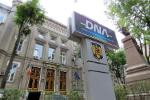Local companies attracted about 3 billion euros from banks since the beginning of the year, with the biggest lenders being the European Bank for Reconstruction and Development (EBRD) and the European Investment Bank (EIB). Each of these institutions contributed approximately 800 million euros and preferred the energy or the automotive industries.
The consultants surveyed by ZF say that this amount is low compared with Romania’s GDP. They also add that the process to restructure financing has just begun.
Whereas EBRD and EIB preferred to finance energy and automotive industries, commercial banks radically changed their strategies, focusing on supporting already existing clients without attempting to gain new ones.
The 2009 Report on Financial Stability published by the NBR in June says that companies can use their cash flow to cover only 40% of the loans maturing this year, which means it is absolutely necessary that banks should roll over their lines of credit.
The companies’ "hunger" for loans is extremely strong at this time, especially in those fields where expansion was fuelled by loans, such as retail, construction or real estate.
However, access to banks’ money remains expensive. Banks are now lending each other money on the interbank makret at about 9% a year, compared with 12-13% last summer, but interests charged from clients start at 11-13% a year, and may go up significantly depending on the client’s risk profile.
"I don’t think this amount is high. I believe most of the loans are actually refinanced lines. There have been few new loans since the beginning of the year, which matters for the economy. I expect only 20% to be new money entering the system, which at Romania’s GDP of 120 billion euros is very little," said Doru Lionachescu, main partner of investment firm Capital Partners.
A&D Pharma was among those compa



